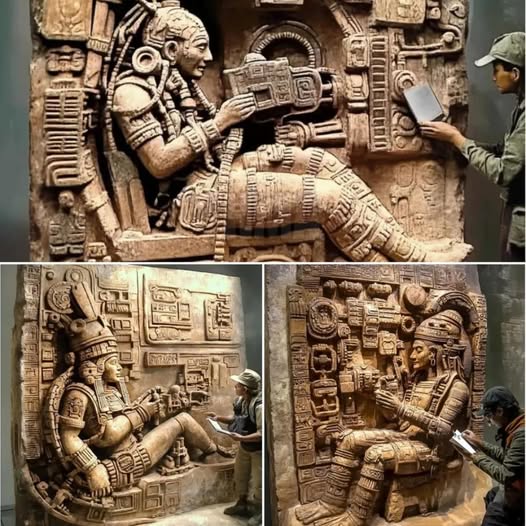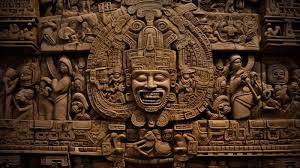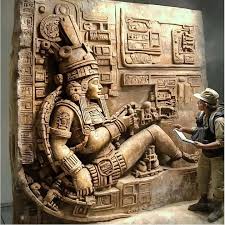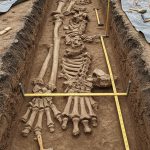Mayan Secrets Unearthed: The Mysterious “Astronaut” of Palenque Reveals Ancient Cosmic Connections

Deep within the lush jungles of Palenque, Mexico, archaeologists have uncovered a remarkable artifact that has captivated the world for over a millennium—the sarcophagus lid of Pakal the Great. This masterpiece of Mayan artistry, carved more than 1,300 years ago, presents an intricate relief depicting Pakal seemingly seated in a capsule-like structure, surrounded by enigmatic symbols that many interpret as celestial or mechanical. This striking imagery has sparked a whirlwind of theories and debates, leading some to propose that the ancient king was portrayed as an astronaut, while others suggest it reflects the Maya’s profound understanding of the cosmos.

The sarcophagus lid, discovered in the Temple of the Inscriptions, showcases not only artistic brilliance but also a complex worldview. The carving includes symbols that resemble stars, planets, and even what some claim to be a depiction of a spacecraft. This has led to bold claims of extraterrestrial contact, suggesting that the Maya may have had encounters with beings from beyond our world. Yet, such assertions blur the line between myth and reality, raising questions about how we interpret ancient symbols and the intentions behind them.
Scholars and enthusiasts alike have proposed a variety of interpretations for this captivating image. Some argue that it symbolizes spiritual ascension, portraying Pakal as a divine figure transcending earthly existence. Others contend that the details and precision of the carving indicate advanced technological knowledge, hinting at a civilization that was far more sophisticated than previously understood. The debate continues to spark interest in the Mayan civilization, urging us to reconsider the depth of their astronomical knowledge and cultural achievements.

As discussions unfold, one truth remains clear: the “Astronaut of Palenque” serves as a bridge between myth, science, and the stars. It invites us to explore the possibilities of ancient connections between humanity and the cosmos, challenging our preconceived notions of history and technology. The allure of this narrative captivates not only historians but also those fascinated by the mysteries of the universe.

In a world where science and mythology often stand at odds, the sarcophagus lid of Pakal the Great encourages a dialogue that transcends disciplinary boundaries. As we delve deeper into the secrets of the Maya, we may uncover not only the story of an ancient civilization but also insights into our own place in the cosmos. The mysteries of Palenque continue to echo through time, reminding us of the endless quest for knowledge that defines the human experience.











